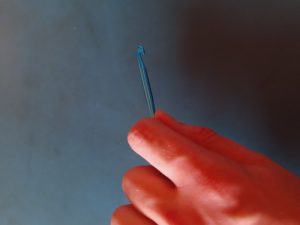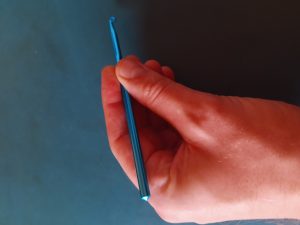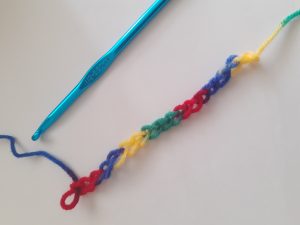These past few weeks I have been working on the basic techniques of crochet, and the experience has allowed me to reflect on the needs of learners in the classroom environment. When first learning how to hold the hook and to create a chain stitch I had to look at several text-based and video guides. Some of the methods of instruction just didn’t make sense to me; I had to look at 4 different sources until I truly understood how to make a chain stitch. As much as the videos made sense, I had to practice each step myself until I was comfortable.

figuring out hook position-“knife style”

figuring out hook position-“pencil style”
This aspect of my inquiry related to classroom learning: when presenting a topic in class I need to take time to explain things in multiple ways, some methods may just not make as much sense to learners as another. I have also realized that no matter how well something is conveyed or demonstrated learners will need to practice and apply what they have been taught in order to make sense of it and understand how to apply it. I was eventually able to make sense of the chain stitch, but there were still many nuances to understand before I could crochet effectively. Things like hand/finger positioning, tension of the yarn, tension of the knot and how to effectively hook the yarn had to be learned independently. The resources I used did not even touch on these nuances; they only covered the basics. For this reason I am going to be sure to incorporate time in my classes for students to actually practice and apply what they have learned; simply memorizing the concept is not enough to really understand.
I am currently able to make a chain stitch(ch in crochet lingo), but still have work to do on the single crochet(sc). Pictured below is my chain, check back soon to see my progress on the single crochet!



Recent Comments